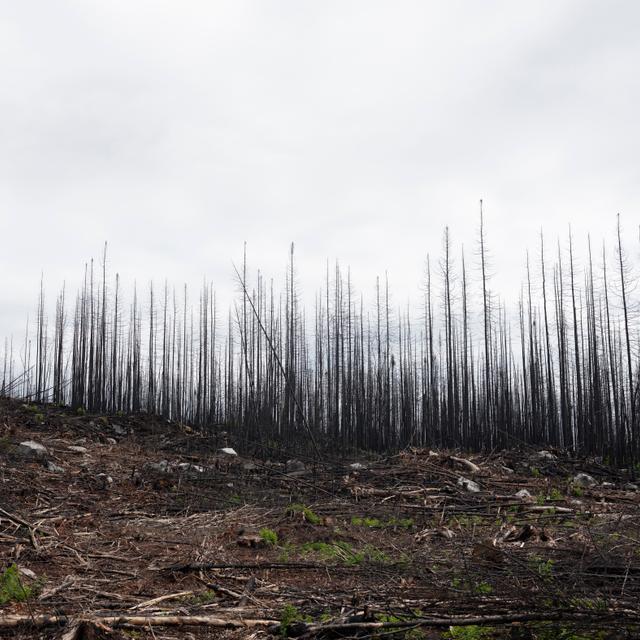


After the devastating 'Fire 344', the future of Canada's boreal forest is uncertain
FeatureOver 6,068 fires have flared up in Canada since the beginning of May. More than 1,000 are still active, 686 of which are considered out of control. The province of Québec has been hardest hit, particularly in the north-western Abitibi-Témiscamingue region.
Along Route 117, which runs from Montreal to northern Québec, at first glance, the scenery seems ageless. Walls of dark-green spruce, the conifer that populates Canada's boreal forest, stand like sentinels on either side of the road for hundreds of kilometers. The only whimsy in this static setting is the movement of the breeze-blown branches of aspen and birch trees, also found in primeval forests.

But a detour of just a few kilometers on a bumpy forest road out of La Vérendrye Park, the largest protected forest reserve in the Abitibi-Témiscamingue region in the west of Québec province, reveals a completely different landscape. Wherever you look, blackened and leveled hills and valleys, spruce and jack pine burned like matchsticks. Charred trunks lie on the ground. Huge blocks of pink granite have been shattered by the intense heat. The white trunks of birch trees, which still stand intact, catch the late-August sunlight. They are the only survivors of the blaze that ravaged the region in the early days of June. Three months after the most intense wildfire on record, blueberries, ferns, purple willowherbs and hardwoods are already growing back in the loosened soil.
After Alberta in western Canada at the beginning of May, the Atlantic provinces in the East of the country a few weeks later, British Columbia and the Northwest Territories – again forcing tens of thousands of people to evacuate their homes in recent days – Québec has also experienced an exceptionally intense fire season.
Everyone here has kept photos of this hellish season on their smartphones – flames shooting up from the back of their cottages, the smoke, "la boucane" as they say in the region. It causes one to lose all bearings, the sun transformed into an opaque disk in a bright orange sky, lines of cars fleeing the blazes – and messages of panic exchanged with loved ones: "It's the apocalypse," one man wrote to his wife.
Since May, 668 fires have ravaged more than 5 million hectares in Québec, representing almost a third of the area burned across the whole of Canada. The surface areas affected are disproportionate on the scale of the country's immensity. In the far north, the largest fire ever recorded in the province, covering more than 1 million hectares, was still under observation at the end of August. It started on May 27. But – this year exceptionally – the flames did not only sweep across the territory's "northern limit," north of the 50th parallel, where the boreal forest is regularly plagued by summer fires. They also attacked the so-called "intensive protection zones," in which many villages are located and where the forest is exploited by humans. A total of 1.5 million hectares went up in smoke in these inhabited areas, one hundred times more than the annual average over the last decade.
You have 85.6% of this article left to read. The rest is for subscribers only.
